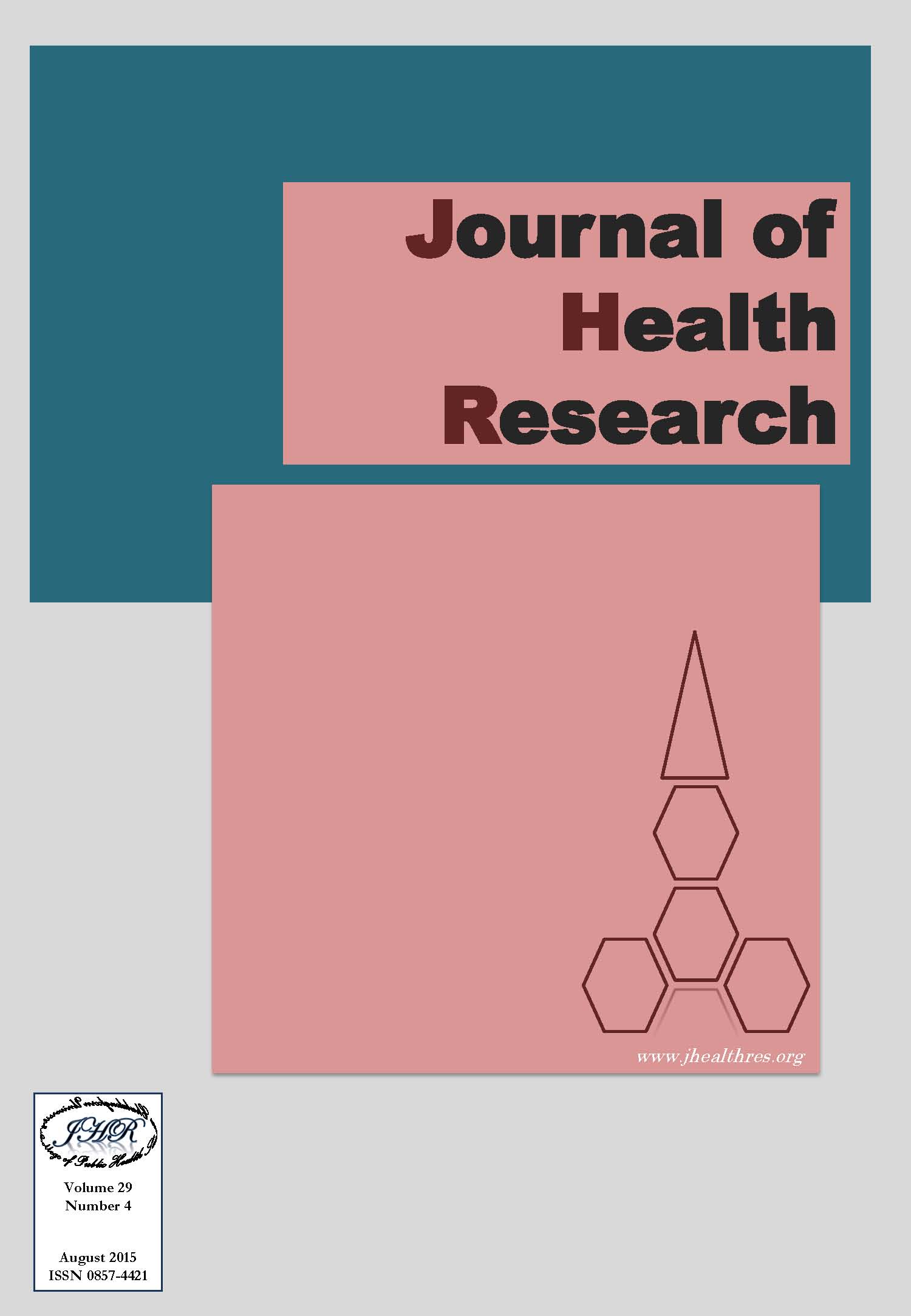Determining Local Exposure Factors of Young Adults in a Northeastern University, Thailand
Keywords:
Daily consumption, Exposure factors, Northeastern young adult, ThailandAbstract
Background: Lack of adequate information on local data for human exposure factors has been problematic for exposure assessment and health risk assessment in Thailand. Data from western countries is often deviated from local situations found in various provinces. This study intended to determine common exposure factors among young adults in university settings in northeastern Thailand.
Method: Questionnaire was used to collect relevant information from the sample groups regarding age, body weight, and daily activity. Daily record and measurement were used to quantify daily water and food consumption over 14 days. Personal air samplers were used to estimate level of total suspended particles (TSP) exposure during commuting on passenger pick-up trucks while ambient air samplers were set to quantify indoor and outdoor fine particulate matter concentrations (PM2.5) during January and May 2014.
Results: The participants were 18 to 22 years old (n = 382 persons) having the average body weight of 60.4 ± 9.2 kg and 51.4 ± 8.3 kg for males and females, respectively. Time-activity patterns showed that daily in-class and out-of-class study occupied about 34% daily, almost equally to resting and sleeping. The rest of the time was leisure, exercising, eating and showering. Drinking water consumption was about 883 ± 338 mL/day. Average daily rice consumption was about 357 ± 108 g/day, somewhat less than other foods (424 ± 126 g/day). Meat, consisting of chicken, pork, and fish, were accounted for 36% while egg and vegetable were about 17% of daily weight of total food consumption. Indoor and outdoor PM2.5 concentrations were not statistically different with indoor/outdoor ratio of 0.94, lower than the ratios found in colder climates. Chemical analyses of air samples indicated that the potential exposure of arsenic, copper, lead, and nickel was in part per billion ranges, 1.5, 10.4, 27.5, and 7.6 ppb, respectively. Major soluble ions were sulfate and nitrate while ammonium ion was lower.
Conclusion: This type of information is important for health impact assessment at the local level, since observations in this study differed substantially from those commonly reported in the foreign literature.







